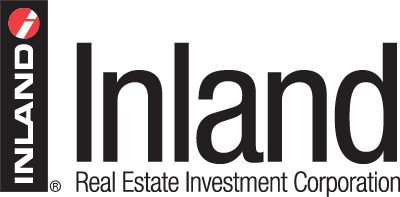There has been a recent surge in press coverage and chatter around the “Big Beautiful Tax Bill” and its key components. As expected, the Trump Administration has included Qualified Opportunity Zones (QOZs) as part of the bill.
A very successful aspect of a past Trump tax plan, QOZs remain a key strategy in planning, providing investors with a powerful tool in managing wealth, minimizing taxes, and pursuing long-term growth. For those looking to defer capital gains tax on eligible asset sales while participating in the development of underserved communities across the United States, the QOZ program remains a preeminent outlet.
Originally introduced as part of the 2017 Tax Cuts and Jobs Act, Opportunity Zones were created to stir private investment in more than 8,700 census tracts across the U.S. that were identified by the U.S. Treasury as economically distressed areas. And there is still time to invest in QOZs. In fact, the QOZ market raised $810M in Q1 2025, signaling a strong appetite for the program.1
Defer capital gains tax on nearly any asset
QOZ investments enable taxpayers to defer capital gains on virtually any asset, including stocks, bonds, mutual funds, art, jewelry, cryptocurrency, real estate, and more. In recent years, many investors have realized significant capital gains from business sales, stock market growth, real estate appreciation, or private equity exits that would equate to a hefty tax bill.
Potential elimination of capital gains tax
QOZs provide a rare opportunity to defer tax on capital gains until 2026 and, more importantly, eliminate capital gains tax entirely on a QOZ investment if held for 10 years or more. Current legislation has the QOZ program set to expire on December 31, 2026. This means that investors with sizable gains have a limited window to put that capital to work in qualifying QOZ projects and start the 10-year clock.
Importantly, however, there are proposals currently being reviewed by Congress, including the “Big Beautiful Bill,” that endeavor to reinstate some of the tax benefits for several more years. As proposed, these changes would be instituted on January 1, 2027, at the earliest, leaving limited options to defer capital gains taxes other than the current version of the QOZ in the interim.2
Momentum is building for QOZ 2.0
The Trump administration is signaling renewed focus on QOZ legislation. With the House of Representatives advancing a 2025 budget resolution, momentum is building in Congress to extend or refine the program. The “Big Beautiful Bill” envisions a new round of tax-incentivized investment, from January 1, 2027, to December 31, 2033, in distressed communities throughout the country, with a special focus on rural areas.2 This may give investors more time to realize the full 10-year hold benefit, allowing new capital to enter the space.
Some elements under consideration include reinstating the 10 percent basis step-up in non-rural areas and a 30% basis step-up in rural areas. This would be restored for QOZ investments made after December 31, 2026, and that are held for at least five years through 2033.3
Another aspect under QOZ 2.0 legislative review is re-designation and expansion of QOZs census tracts. Governors could nominate additional census tracts for inclusion. However, it limits these new designations to no more than 25% of eligible low-income census tracts in a state. Notably, it mandates that a significant portion of these new designations—at least 33% or all eligible rural areas if rural areas account for less than 33% of tracts that meet the criteria—must be located in entirely rural communities.2
We anticipate the reconciliation bill for QOZ’s to be signed by Labor Day. The House of Representatives has passed their version, and Senate just released its own version of the bill on June 16, 2025. It’s possible that a 10-year extension could be passed by year-end, with permanent legislation potentially coming in the next cycle.
Bottom line
Despite time marching toward the burn-off of some of the benefits of the original QOZ programs, we believe they should remain part of wealth and tax-management strategies for financial and tax advisors and their clients. Regardless of investment objective (total return, diversification or simply tax deferral) the QOZ program has introduced a unique strategy that could potentially improve both investment portfolios returns and structure while providing economic benefits to underserved communities.
1 https://altswire.com/qualified-opportunity-zone-funds-raise-more-than-810-million-in-q1-2025/
2 https://www.pillsburylaw.com/en/news-and-insights/opportunity-zones-big-beautiful-bill.html
3 https://www.novoco.com/news/proposed-reconciliation-legislation-would-extend-enhance-oz-incentive-includes-key-lihtc-proposal




